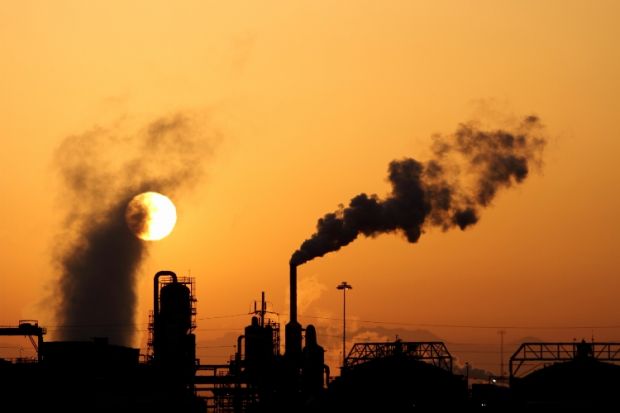The Paris Climate Agreement requires India to reduce its carbon emissions and increase its carbon sink. The Agreement is a legally binding international treaty signed by 196 countries, including India, to keep global warming well below 2 degrees Celsius.

What exactly is a carbon sink?
- A carbon sink is a natural or man-made reservoir that absorbs and stores carbon dioxide (CO2).
- It could be a natural ecosystem like forests, oceans, or soil, or it could be a man-made system like carbon capture and storage (CCS) technology.
- Carbon sinks aid in reducing CO2 levels in the atmosphere and mitigating the negative effects of climate change.
Methods of Carbon Sinks
Carbon sinks are classified into two types:
(A) Natural Carbon Sinks: These are ecosystems that absorb and store carbon from the atmosphere naturally. The following are the most common natural carbon sinks:
- Forests: Through photosynthesis, trees absorb CO2 and store it in their trunks, branches, and roots.
- Oceans: CO2 is absorbed from the atmosphere by the ocean, where it dissolves and forms carbonic acid.
- Soil: Carbon can be stored in soil as organic matter, such as dead plant and animal material, which microorganisms break down.
(B) Man-made Carbon Sinks: These are technologies that capture and store carbon from the atmosphere. The following are the most common artificial carbon sinks:
- Carbon Capture and Storage (CCS): CCS technology captures and stores CO2 emissions from industrial processes such as power plants.
- Direct Air Capture (DAC): DAC technology captures CO2 directly from the air and either stores it underground or repurposes it.
India’s carbon sink goal
- India has pledged to add 2.5 to 3 billion tonnes of CO2 equivalent carbon sinks by 2030.
- Afforestation, reforestation, and other land-use changes will be used to accomplish this.
India’s progress towards its goal of becoming a carbon sink
- As of 2017, India had already achieved 24.6% of its carbon sink target.
- This was primarily due to programmes such as the Green India Mission and the National Afforestation Programme.
The difficulties in meeting India’s carbon sink target
- Inadequate availability of accurate data: The lack of accurate data on the extent and health of India’s forests makes measuring the effectiveness of afforestation and reforestation programmes difficult.
- Natural forest conversion: Converting natural forests to monoculture plantations with lower carbon sequestration potential can reduce the effectiveness of carbon sinks.
- Land pressure: Land pressure from agriculture and other forms of development can result in deforestation and the loss of carbon sinks.
- Afforestation and reforestation programmes require significant funding, which can be difficult for India.
- Lack of awareness: A lack of public and policymaker understanding of the importance of carbon sinks and the need for their conservation and restoration can stymie efforts to meet India’s carbon sink targets.
@the end
- The commitment of India to increasing its carbon sink is critical in mitigating the effects of climate change.
- More efforts are required to ensure the success of afforestation and reforestation programmes, as well as to address the issues confronting India’s forests.
Source: https://indianexpress.com/article/explained/explained-climate/meeting-indias-carbon-sink-target-co2-emission-paris-climate-conference-8484854/#:~:text=The%20carbon%20sink%20target%20had,mention%20of%20the%20baseline%20year.
